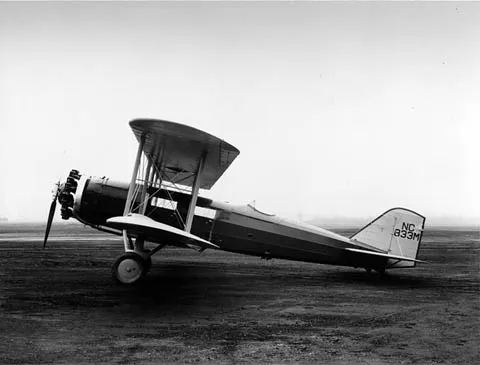Boeing Model 40
| Model 40 | |
|---|---|
 |
|
| Role | Mail plane |
| Manufacturer | Boeing |
| First flight | July 20, 1925 |
| Introduction | July 1, 1927 |
| Primary users |
Boeing Air Transport Varney Air Lines Pacific Air Transport |
| Number built | ca. 80 |
The Boeing Model 40 was a United States mail plane of the 1920s. It was a single-engined biplane that was widely used for airmail services in the United States in the 1920s and 1930s, especially by airlines that later became part of United Airlines. It became the first aircraft built by the Boeing company to carry passengers.
In 1925, the US Post Office issued a requirement for a mailplane to replace the ex-military DH-4s then in use. The new aircraft was required to use the same water-cooled Liberty V12 engine as used by the DH-4, of which large stocks of war-built engines were available. The resultant aircraft, the Boeing Model 40, was a conventional tractor biplane, with the required Liberty engine housed in a streamlined cowling with an underslung radiator. The aircraft's fuselage had a steel tube structure, with an aluminum and laminated wood covering. Up to 1,000 lb (450 kg) of mail was carried in two compartments in the forward fuselage, while the single pilot sat in an open cockpit in the rear fuselage. The wings and tail were of wooden construction, and the Model 40 had a fixed conventional landing gear.
The Model 40 made its first flight on July 7, 1925. Although the prototype was purchased by the US Post Office, the production order went to the Douglas M-2.
The Contract Air Mail Act of 1925 set out the gradual privatization of the Post Office's Air Mail routes. In late 1926, bids were requested for the main transcontinental trunk mail route, which was to be split into eastern and western sections, with Boeing bidding for the western section. Boeing revived the design for the tender, with the Model 40A replacing the Liberty engine with a 425 hp (317 kW) air-cooled Pratt & Whitney Wasp radial engine, which was 200 lb (91 kg) lighter than the Liberty, ignoring the weight of the Liberty's radiator and cooling water. The fuselage was redesigned to make more extensive use of welded steel tubing, and an enclosed cabin was fitted between the mail compartments, allowing two passengers to be carried as well as 1,200 lb (540 kg) of mail. Boeing's bid of $3 per lb was much less than any of the competing bids, and Boeing was awarded the San Francisco to Chicago contract in January 1927, building 24 Model 40As for the route (with a further aircraft being used as a testbed by Pratt & Whitney).
...
Wikipedia
